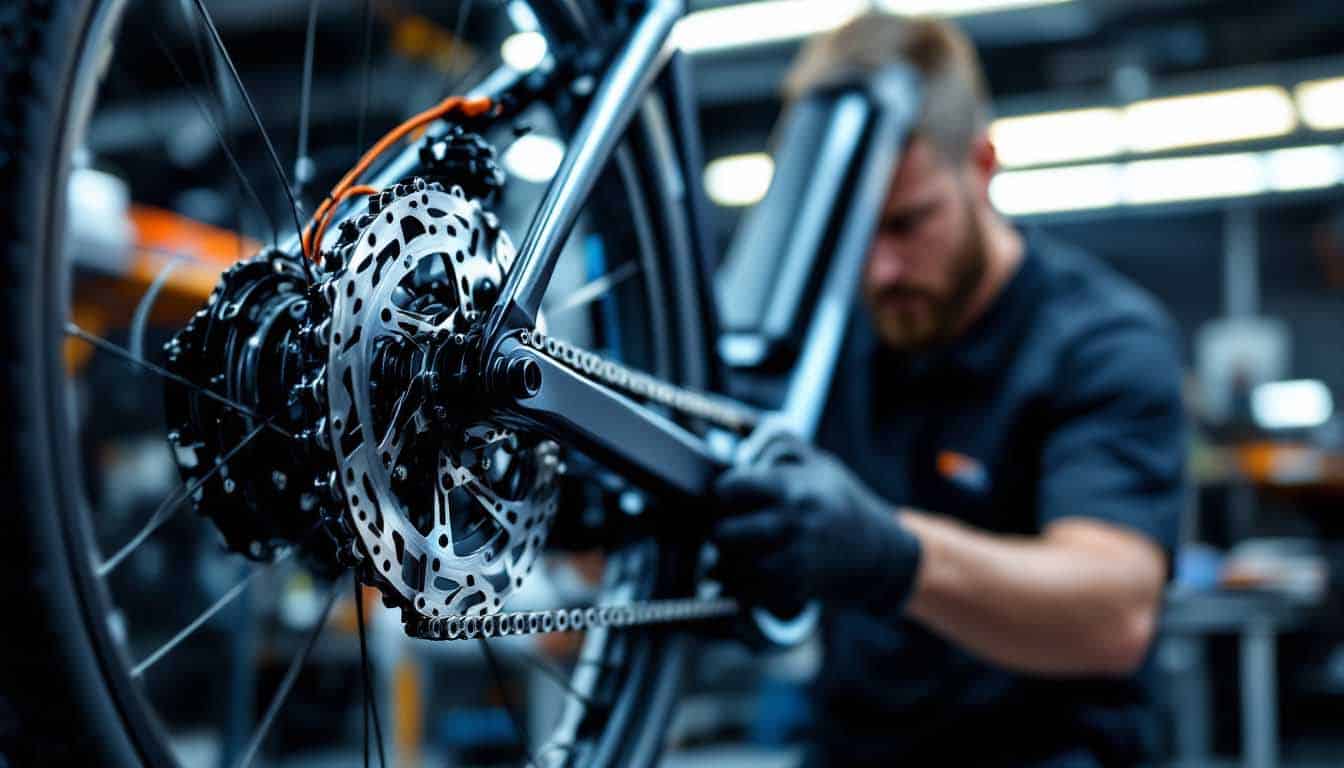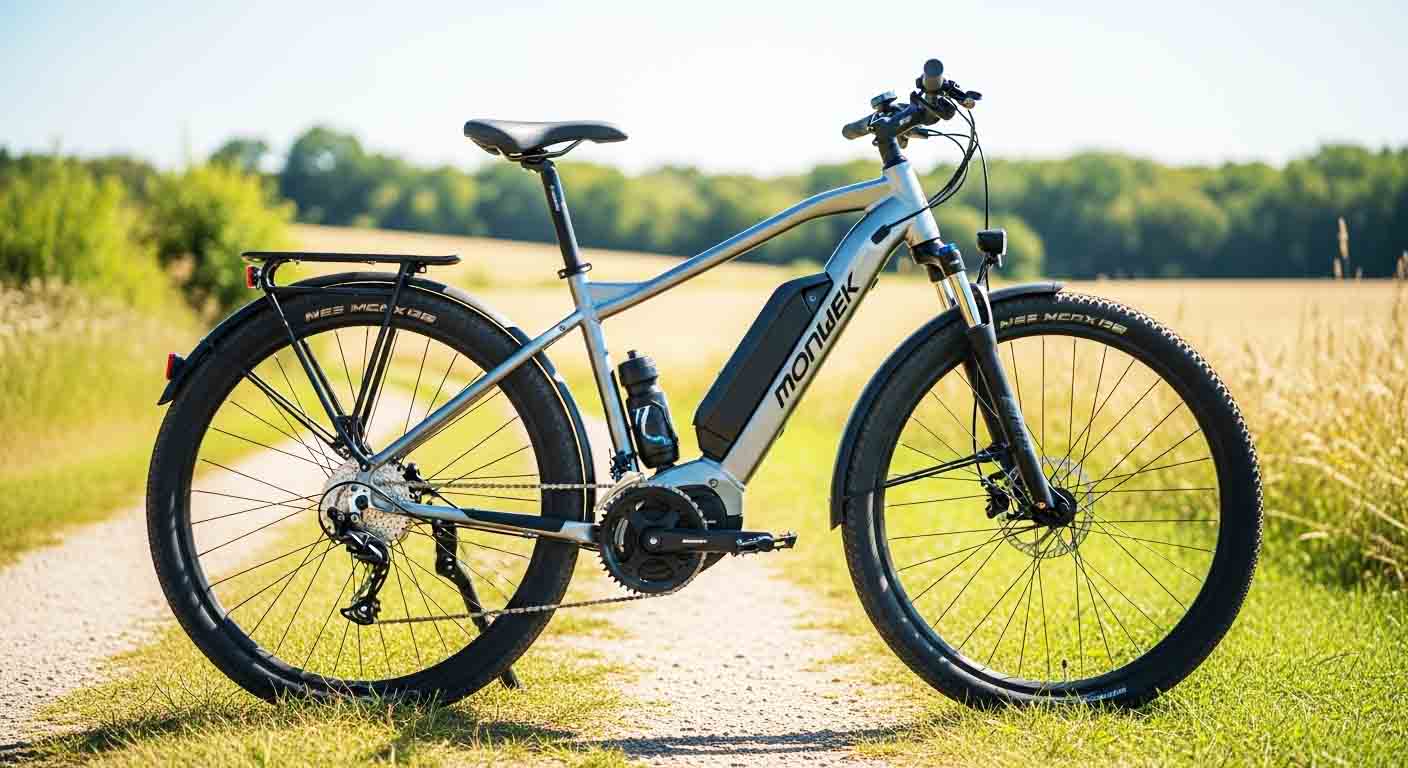Understanding E-Bike Laws and Regulations: What Every Rider Should Know
Understanding E-Bike Laws and Regulations: What Every Rider Should Know
Electric bikes, or e-bikes, are transforming the way people commute and explore cities around the world. They are eco-friendly, cost-efficient, and fun to ride. However, before hopping on an e-bike, it’s important to understand that laws and regulations vary significantly depending on your country, state, or even city. Knowing the rules not only keeps you safe but also helps you avoid costly fines.
In this article, we’ll break down the basics of e-bike laws, highlight key differences in the United States, Europe, and Asia, and provide practical tips to ensure you’re riding legally and responsibly.
Why Understanding E-Bike Laws Matters
Unlike traditional bicycles, e-bikes come with motors and speed capabilities, which place them somewhere between a bicycle and a motorcycle in legal terms. Some countries classify them as regular bicycles, while others treat them like mopeds or scooters.
Misunderstanding the law can lead to:
-
Riding in areas where e-bikes are prohibited.
-
Fines or penalties for not wearing required safety gear.
-
Insurance or liability issues in case of accidents.
In short: knowing the rules keeps you safe and saves you money.
General E-Bike Classifications
While the exact definitions vary, most countries use a tiered system based on motor power and speed:
-
Class 1: Pedal-assist only, motor provides assistance up to 20 mph (32 km/h).
-
Class 2: Throttle-assisted e-bikes, also limited to 20 mph (32 km/h).
-
Class 3: Pedal-assist up to 28 mph (45 km/h), usually restricted to adult riders and sometimes requiring helmets.
These categories are not universal but serve as a good reference point.
E-Bike Laws in the United States
The U.S. follows a three-class system, but regulations may differ across states.
-
Helmet Requirements: Vary by state. Some require helmets only for riders under 18, while others mandate them for Class 3 riders of all ages.
-
Age Restrictions: Generally, Class 3 riders must be at least 16 years old.
-
Where You Can Ride: Class 1 and 2 are often allowed on bike paths, while Class 3 may be restricted to roadways or designated lanes.
-
Licensing and Registration: In most states, e-bikes don’t require a license or registration, but exceptions exist.
👉 Example: In California, Class 1 and 2 are treated like bicycles, but Class 3 cannot be used on bike paths unless specifically permitted.
E-Bike Laws in Europe
Europe tends to be stricter with regulations, especially regarding motor power.
-
Power Limit: Most EU countries cap e-bikes at 250W motors.
-
Speed Limit: Pedal-assist allowed up to 25 km/h (15.5 mph).
-
Licensing: Standard e-bikes (up to 250W) do not require a license. However, “speed pedelecs” (capable of 45 km/h) often require registration, insurance, and a driving license.
-
Helmet Rules: Vary, but many countries require helmets for faster categories.
👉 Example: In Germany, a 25 km/h e-bike is considered a bicycle, while a 45 km/h version is treated like a moped.
E-Bike Laws in Asia
Asia presents a diverse picture due to rapid adoption of e-bikes.
-
China: The world’s largest e-bike market. Laws require e-bikes to be capped at 25 km/h with a maximum weight of 55 kg. Riders must register their bikes and, in many cities, wear helmets.
-
Japan: E-bikes must provide pedal-assist only (no throttles allowed). The assist cuts off at 24 km/h.
-
India: Low-powered e-bikes (under 250W, up to 25 km/h) do not need registration or licenses, making them widely accessible.
👉 Important note: Some Asian cities ban e-bikes from certain urban zones due to traffic concerns. Always check local rules.
Common Global Regulations to Keep in Mind
Regardless of where you live, several rules tend to appear worldwide:
-
Helmet Safety – Strongly recommended everywhere, even if not legally required.
-
Motor Power & Speed Limits – Usually between 20–28 mph (32–45 km/h).
-
Riding Zones – Sidewalks, highways, and pedestrian areas often have restrictions.
-
Age Limits – Many countries set a minimum age for faster e-bikes.
-
Insurance & Registration – Typically required for high-speed models.
Tips for Riding Legally and Safely
-
Research Local Laws: Check your city or country’s transportation authority website.
-
Wear Proper Gear: Helmets, reflective clothing, and lights improve safety.
-
Respect Bike Paths: Don’t assume your e-bike is allowed everywhere.
-
Consider Insurance: Especially if riding higher-powered e-bikes.
-
Stay Updated: Laws evolve quickly as e-bike use grows.
The Future of E-Bike Regulations
Governments worldwide are catching up with the e-bike boom. Expect clearer frameworks around:
-
Battery safety standards.
-
Integration with public transportation.
-
Urban planning for bike-friendly infrastructure.
As e-bikes become more common, laws will likely become more standardized internationally.
Conclusion
E-bikes are an exciting way to move around, but responsible riding starts with knowing the law. Whether you’re in the U.S., Europe, or Asia, pay attention to speed limits, power restrictions, and helmet rules. Remember: what’s legal in one country may not be in another.
By staying informed, you not only protect yourself but also contribute to making e-bikes a safe and sustainable transportation option worldwide.
FAQs about E-Bike Laws
1. Do I need a license to ride an e-bike?
In most countries, low-powered e-bikes don’t require a license. High-speed models often do.
2. Can I ride my e-bike on sidewalks?
Usually no. Most places restrict e-bikes to bike lanes, roads, or shared paths.
3. What happens if I modify my e-bike to go faster?
It may be reclassified as a moped or motorcycle, requiring registration and insurance.
4. Are helmets mandatory?
Not always, but they are strongly recommended everywhere.
5. How can I find the rules in my city?
Check your local transportation authority website or city government portal.
RELATED POSTS
ROCKBROS Bike Seat Cushio...
$19.98 (as of October 13, 2025 03:34 GMT +00:00 - More infoAs a site dedicated to cycling innovation, gear reviews, and next-generation bike technology, we sometimes recommend products and accessories that can enhance your riding experience. When you purchase through our affiliate links, we may earn a small commission at no extra cost to you. This support helps us continue creating valuable content, guides, and reviews for the biking community.
Please note: Product prices and availability are accurate as of the date/time indicated and are subject to change. Any price and availability information displayed on Amazon.com at the time of purchase will apply to your order.
We only recommend products we believe bring real value to cyclists who are passionate about performance, safety, and the future of biking technology.
)Bell Richter Youth Bike H...
$20.99 (as of October 13, 2025 03:34 GMT +00:00 - More infoAs a site dedicated to cycling innovation, gear reviews, and next-generation bike technology, we sometimes recommend products and accessories that can enhance your riding experience. When you purchase through our affiliate links, we may earn a small commission at no extra cost to you. This support helps us continue creating valuable content, guides, and reviews for the biking community.
Please note: Product prices and availability are accurate as of the date/time indicated and are subject to change. Any price and availability information displayed on Amazon.com at the time of purchase will apply to your order.
We only recommend products we believe bring real value to cyclists who are passionate about performance, safety, and the future of biking technology.
)DKONI Bike Helmet with LE...
$34.98 (as of October 13, 2025 03:34 GMT +00:00 - More infoAs a site dedicated to cycling innovation, gear reviews, and next-generation bike technology, we sometimes recommend products and accessories that can enhance your riding experience. When you purchase through our affiliate links, we may earn a small commission at no extra cost to you. This support helps us continue creating valuable content, guides, and reviews for the biking community.
Please note: Product prices and availability are accurate as of the date/time indicated and are subject to change. Any price and availability information displayed on Amazon.com at the time of purchase will apply to your order.
We only recommend products we believe bring real value to cyclists who are passionate about performance, safety, and the future of biking technology.
)ROCK BROS Bike/Bicycle Phone Front ...
$25.99 (as of October 10, 2025 03:29 GMT +00:00 - More infoAs a site dedicated to cycling innovation, gear reviews, and next-generation bike technology, we sometimes recommend products and accessories that can enhance your riding experience. When you purchase through our affiliate links, we may earn a small commission at no extra cost to you. This support helps us continue creating valuable content, guides, and reviews for the biking community.
Please note: Product prices and availability are accurate as of the date/time indicated and are subject to change. Any price and availability information displayed on Amazon.com at the time of purchase will apply to your order.
We only recommend products we believe bring real value to cyclists who are passionate about performance, safety, and the future of biking technology.
)8PCS Summer-Exclusive Non Slip Spor...
$6.99 (as of October 13, 2025 03:34 GMT +00:00 - More infoAs a site dedicated to cycling innovation, gear reviews, and next-generation bike technology, we sometimes recommend products and accessories that can enhance your riding experience. When you purchase through our affiliate links, we may earn a small commission at no extra cost to you. This support helps us continue creating valuable content, guides, and reviews for the biking community.
Please note: Product prices and availability are accurate as of the date/time indicated and are subject to change. Any price and availability information displayed on Amazon.com at the time of purchase will apply to your order.
We only recommend products we believe bring real value to cyclists who are passionate about performance, safety, and the future of biking technology.
)Hanes Originals Men's Tri-Blend Lon...
$5.99 (as of October 13, 2025 03:34 GMT +00:00 - More infoAs a site dedicated to cycling innovation, gear reviews, and next-generation bike technology, we sometimes recommend products and accessories that can enhance your riding experience. When you purchase through our affiliate links, we may earn a small commission at no extra cost to you. This support helps us continue creating valuable content, guides, and reviews for the biking community.
Please note: Product prices and availability are accurate as of the date/time indicated and are subject to change. Any price and availability information displayed on Amazon.com at the time of purchase will apply to your order.
We only recommend products we believe bring real value to cyclists who are passionate about performance, safety, and the future of biking technology.
)USONG Bike Kickstand Chil...
$11.95 (as of October 13, 2025 03:34 GMT +00:00 - More infoAs a site dedicated to cycling innovation, gear reviews, and next-generation bike technology, we sometimes recommend products and accessories that can enhance your riding experience. When you purchase through our affiliate links, we may earn a small commission at no extra cost to you. This support helps us continue creating valuable content, guides, and reviews for the biking community.
Please note: Product prices and availability are accurate as of the date/time indicated and are subject to change. Any price and availability information displayed on Amazon.com at the time of purchase will apply to your order.
We only recommend products we believe bring real value to cyclists who are passionate about performance, safety, and the future of biking technology.
)4 Pairs Bike Brake Pads,B...
$9.99 (as of October 13, 2025 03:34 GMT +00:00 - More infoAs a site dedicated to cycling innovation, gear reviews, and next-generation bike technology, we sometimes recommend products and accessories that can enhance your riding experience. When you purchase through our affiliate links, we may earn a small commission at no extra cost to you. This support helps us continue creating valuable content, guides, and reviews for the biking community.
Please note: Product prices and availability are accurate as of the date/time indicated and are subject to change. Any price and availability information displayed on Amazon.com at the time of purchase will apply to your order.
We only recommend products we believe bring real value to cyclists who are passionate about performance, safety, and the future of biking technology.
)Giro Register MIPS II Wom...
$77.12 (as of October 13, 2025 03:34 GMT +00:00 - More infoAs a site dedicated to cycling innovation, gear reviews, and next-generation bike technology, we sometimes recommend products and accessories that can enhance your riding experience. When you purchase through our affiliate links, we may earn a small commission at no extra cost to you. This support helps us continue creating valuable content, guides, and reviews for the biking community.
Please note: Product prices and availability are accurate as of the date/time indicated and are subject to change. Any price and availability information displayed on Amazon.com at the time of purchase will apply to your order.
We only recommend products we believe bring real value to cyclists who are passionate about performance, safety, and the future of biking technology.
)














